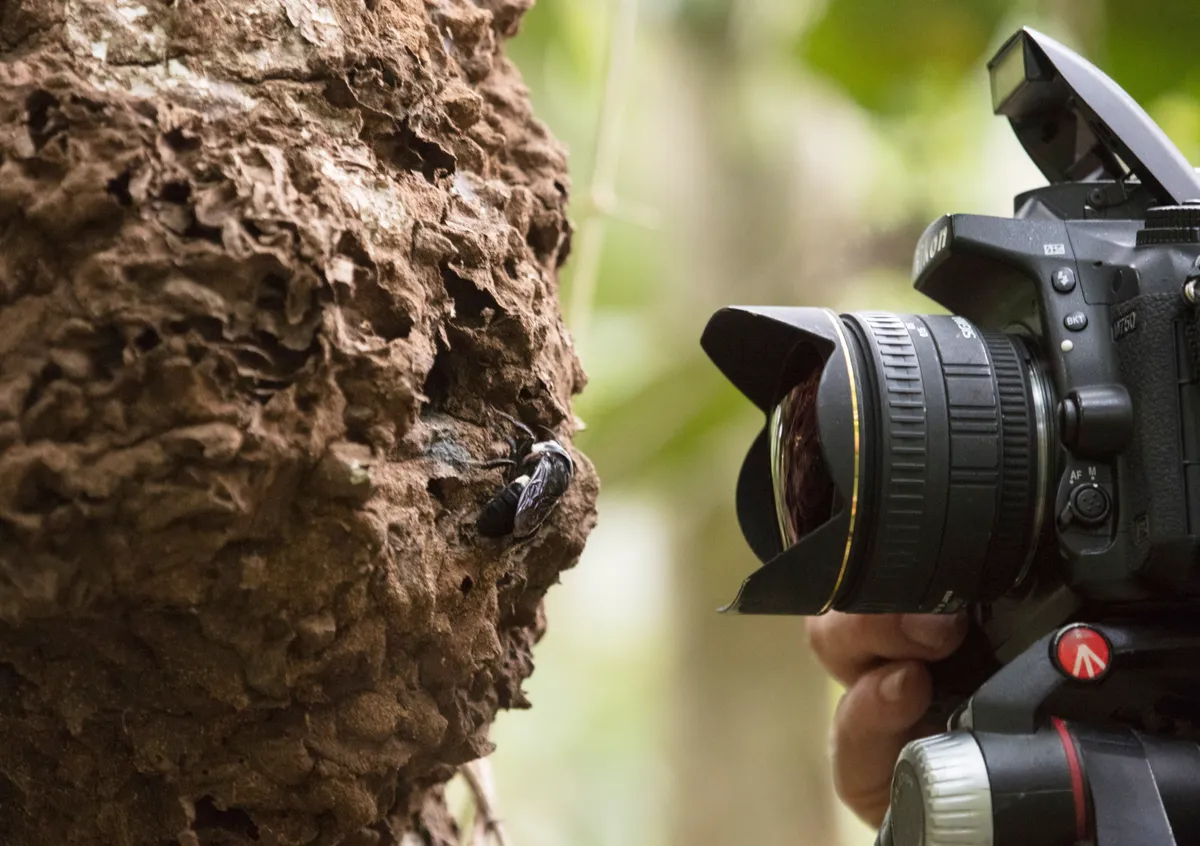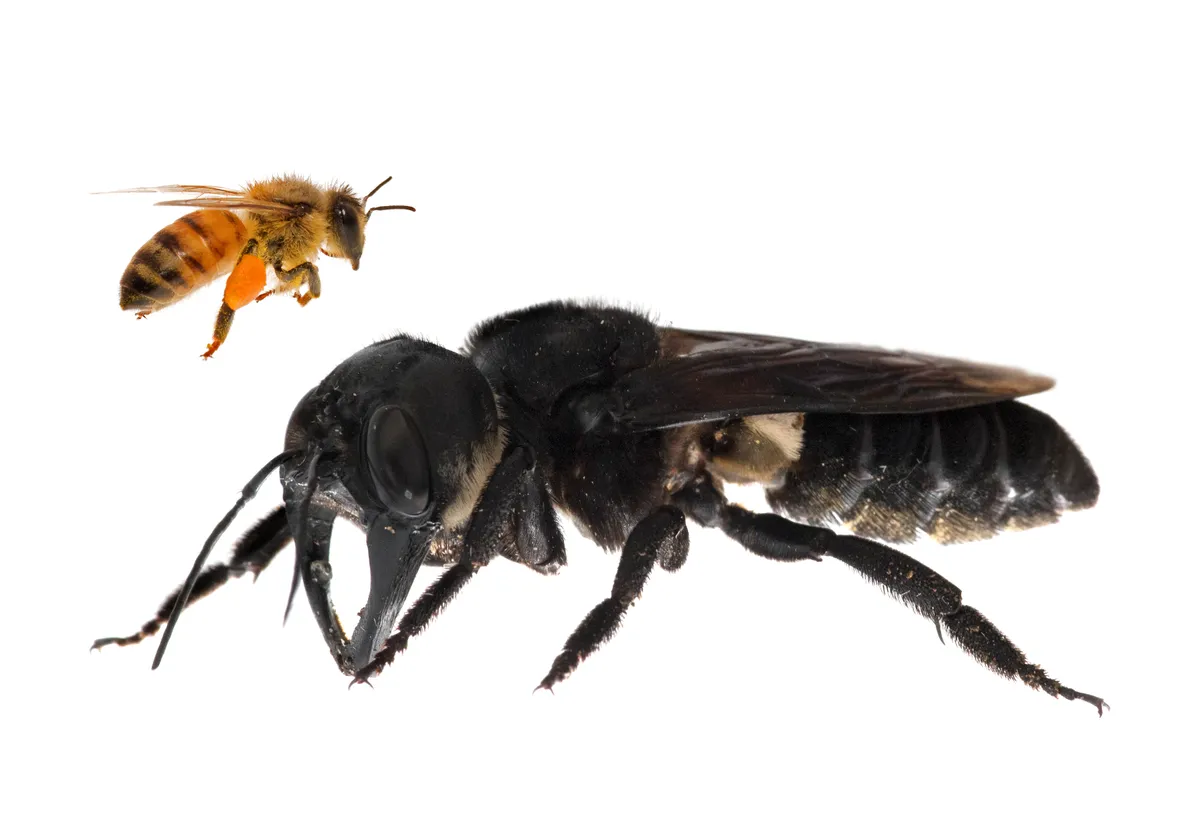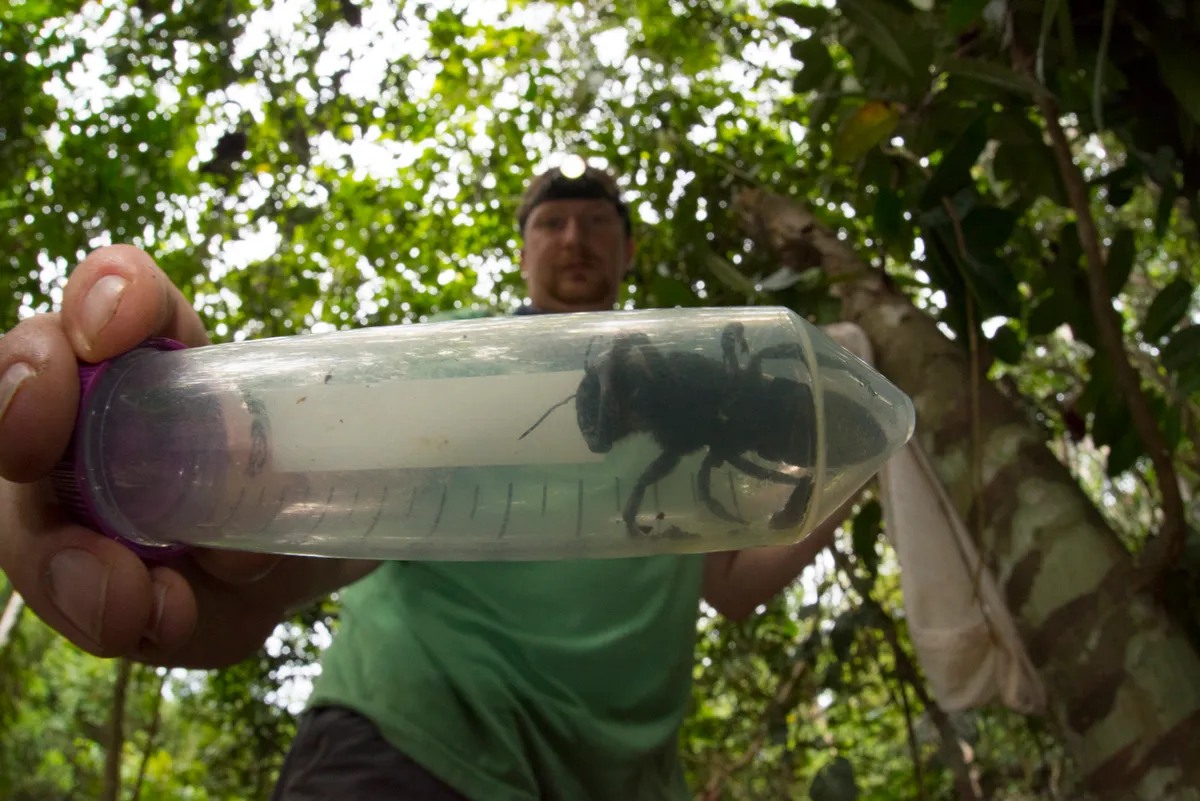Originally described as Megachile pluto in 1958 by Alfred Russell Wallace, and holding the title of the world’s largest bee, the Wallace’s giant bee (named after the renowned British naturalist) has been lost to science for 38 years.
However, a search team from The Search for Lost Species, a Global Wildlife Conservation (GWC) initiative have now rediscovered the bee in the Indonesian islands of North Moluccas, and photographed and filmed the bee in the wild for the first time.
“It was absolutely breathtaking to see this ‘flying bulldog’ of an insect that we weren’t sure existed anymore, to have real proof right there in front of us in the wild,” says Clay Bolt, who took the first photos and video of the species alive.

“To actually see how beautiful and big the species is in life, to hear the sound of its giant wings thrumming as it flew past my head, was just incredible. My dream is to now use this rediscovery to elevate this bee to a symbol of conservation in this part of Indonesia, and a point of pride for the locals there,” he adds.
Prior to this rediscovery, there are only two published sightings of this species. The original sighting by Wallace in 1858, who described it as “a large black wasp-like insect, with immense jaws like a stag-beetle. Then again in 1981 by entomologist Adam Messer. Searches since 1981 have proved to be unsuccessful until now.
However, National Geographic reports that 20 to 30 of these bees were seen by Rich Desmier de Chenon, a French entomologist, in the 1990s. He was guided to the bees by locals, who were familiar with the species.
One of the bees was collected, but de Chenon didn’t publish his work as he feared this would encourage collectors to find and capture the bee.
In fact, the bee has been sold online with one specimen selling on eBay for $9,100 in 2018.
The Twitter account run by the Natural History Museum's bee curator also tweeted:
“We know that putting the news out about this rediscovery could seem like a big risk given the demand, but the reality is that unscrupulous collectors already know that the bee is out there,” says Robin Moore, from Search for Lost Species.
There are no legal protections around the giant bee being traded, and the bee is listed as Vulnerable on the IUCN Red List.
“The bee’s protection moving forward is going to rely first on the appropriate government officials and stakeholders knowing that the bee even exists, and then their willingness to help protect it,” adds Moore. “By making the bee a world-famous flagship for conservation, we are confident that the species has a brighter future than if we just let it quietly be collected into oblivion.”

The female Wallace’s giant bee is four times as large as the European honeybee worker, and almost twice as large as the male of her species.
Although little is known about the species, the female uses her giant mandibles to collect sticky tree resin to line her nest, which she makes in active arboreal termite mounds. The resin protects the nest from termites.
The team found dozens of termite mounds during the search, but it was only on the last day that a single female Wallace’s giant bee was found, in a nest about 2.4m off the ground.

“Messer’s rediscovery gave us some insight, but we still know next to nothing about this extraordinary insect,” says trip member and bee expert Eli Wyman, an entomologist at Princeton University. “I hope this rediscovery will spark future research that will give us a deeper understanding of the life history of this very unique bee and inform any future efforts to protect it from extinction.”

Wallace’s giant bee is the second rediscovery in the Search for Lost Species programme, following the Jackson’s climbing salamander found in 2015.
In the same week the Wallace’s giant bee rediscovery was announced, the programme also declared that the Fernandina Galápagos tortoise has been found.
